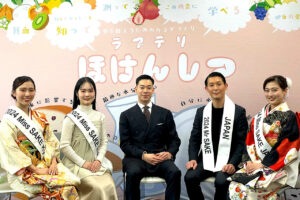
PR
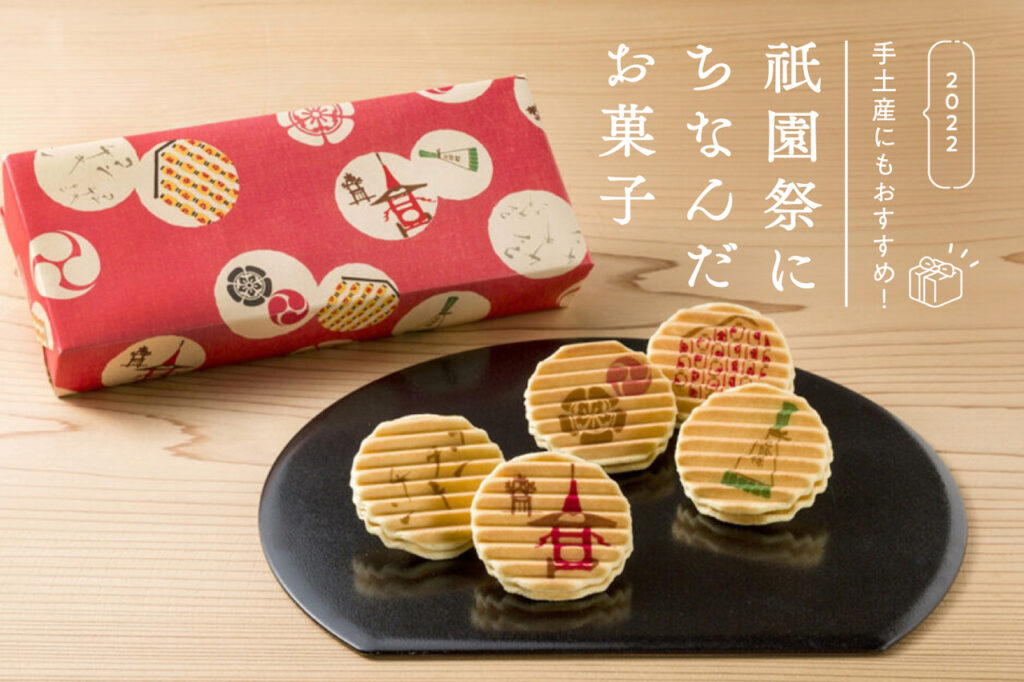

The heat is getting hotter these days. Summer is finally approaching in Kyoto. One event that cannot be missed during the summer in Kyoto is the Gion Festival, which takes up the entire month of July. This year, for the first time in three years, the Yamaboko procession will be held, and it is attracting a great deal of attention.
If you are going to go to the Gion Festival, you will not only want to enjoy the festival, but you will also want to take care of the souvenirs. In this article, we introduce seven types of confectioneries associated with the Gion Festival that are perfect as souvenirs. How about one for your friend or yourself as a wonderful memory of the Gion Festival? (TEXT / Raku Mashita)
Founded in the Meiji era (1868-1912), Narumi Mochi Honten has a history of nearly 150 years. The shop offers products that are part of the Kyoto lifestyle, including its famous sekihan (red rice). The "Hoko Dorayaki (float-shaped pancake)" is a specialty of Narumi Mochi Honten during the Gion Festival season. The branding on the dorayaki is in the shape of the Choto-boko, and it is easy to tell at first glance that it is a confectionery associated with the Gion Festival. The key to the flavor is the moist and fluffy dough made by hand and the red bean paste made from Dainagon Azuki produced in Tanba. Please purchase according to the number of friends and family members you have.
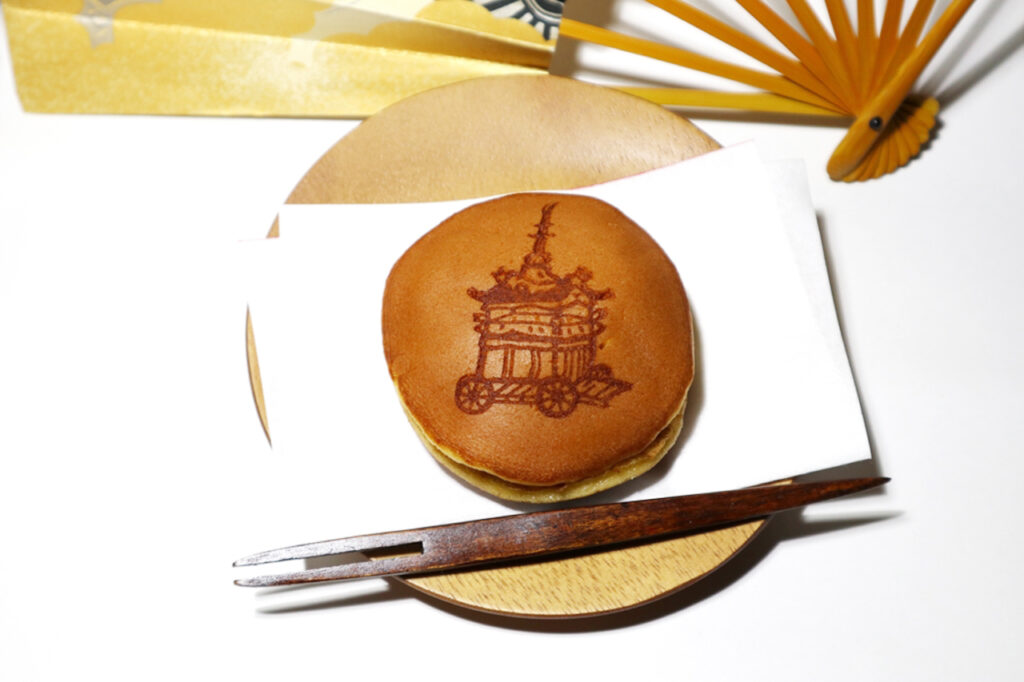
Hoko Dorayaki 216 yen (around July 1 to July 24)

Kohzuki is a confectionary shop with stores all over Japan. Their signature product, "Senju Senbei," is a cookie dough with cream and a Western-style flavor that has been well received. The "Design Senju Senbei" is a design of the Gion Festival. The "Konchikichin" character, which represents the music of the Gion Festival, and illustrations of the lanterns and chimakis of the Yamahoko floats make for a very cute product. While enjoying the cute appearance, it is also fun to talk about your memories of the Gion Festival. The wrapping paper is also specially designed with Gion Festival motifs, making it a great gift.
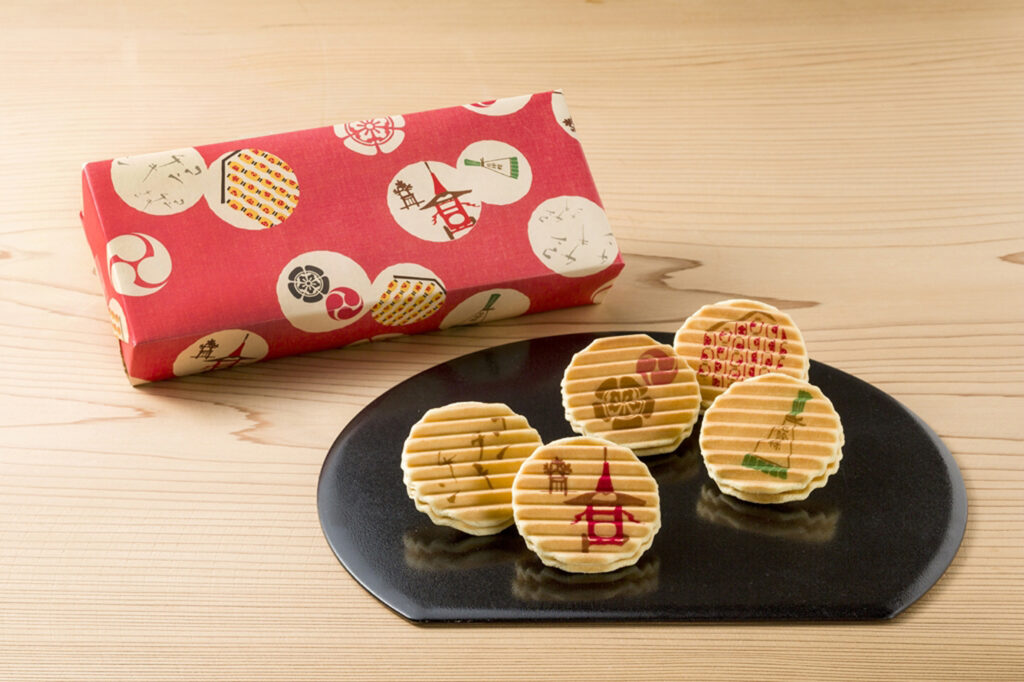
Design Senju Senbei 5-pack, 1080 yen (July 1 - July 24 *Only available at stores in Kyoto area)

Tawaraya Yoshitomi has been making traditional Kyoto sweets since its establishment in the Edo period. The limited-edition "Gion Hayashi" sold in July is one of the creative dry confections in the series. The colorful dried amber and fuyaki decorated with the Yamaboko floats are so gorgeous that it would be a shame to eat them. The box of dried confectionaries makes you feel as if you are about to hear the music of the Gion Festival. It is a confectionery that can be enjoyed not only to be savored, but also as a work of art.
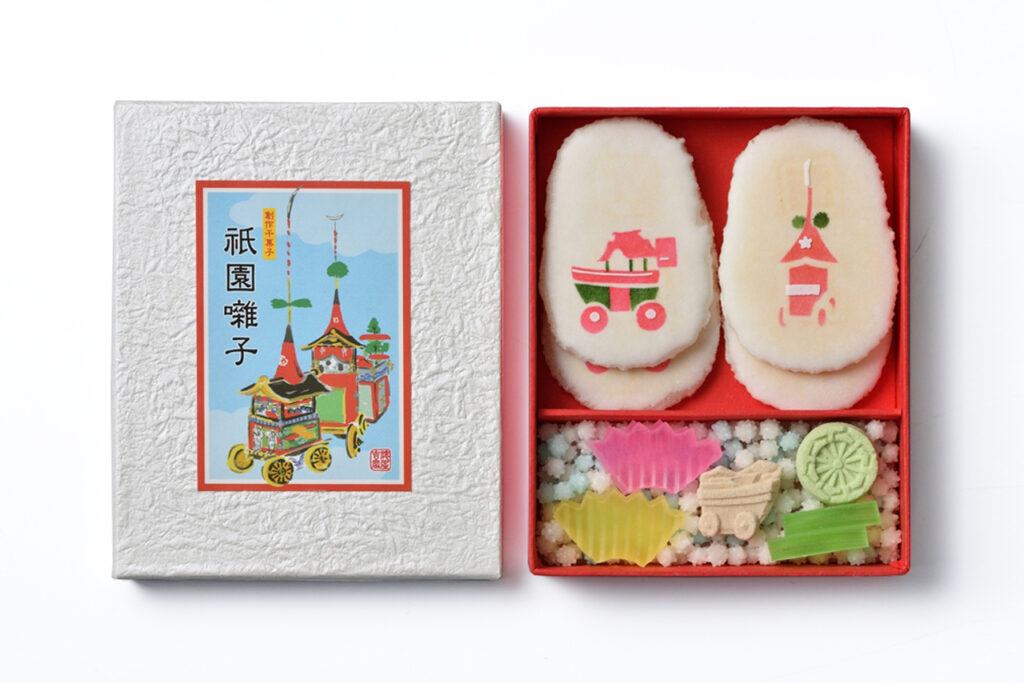
Gionbayashi: 972 yen (around July 1 - July 24)

[Kameya Ryoucho is a Kyoto confectionary store known for its products that make use of a modern sense of taste. Among them, the "sliced Yokan," which was created by a change of concept, is one of the company's most popular Japanese sweets. Yoiyama Dango" heralds the arrival of the Gion Festival season. These dumplings are filled with white miso paste and wrapped in gyuhi, giving them an irresistible mochi (sticky rice cake) texture. The dumplings are bite-sized, so you may find yourself reaching for another one as you eat them. Inside the box, the dumplings are lined up like the lanterns of the Yamahoko floats, which gives the impression of the Gion Festival. The sales period is a little short, so please check the information before buying.
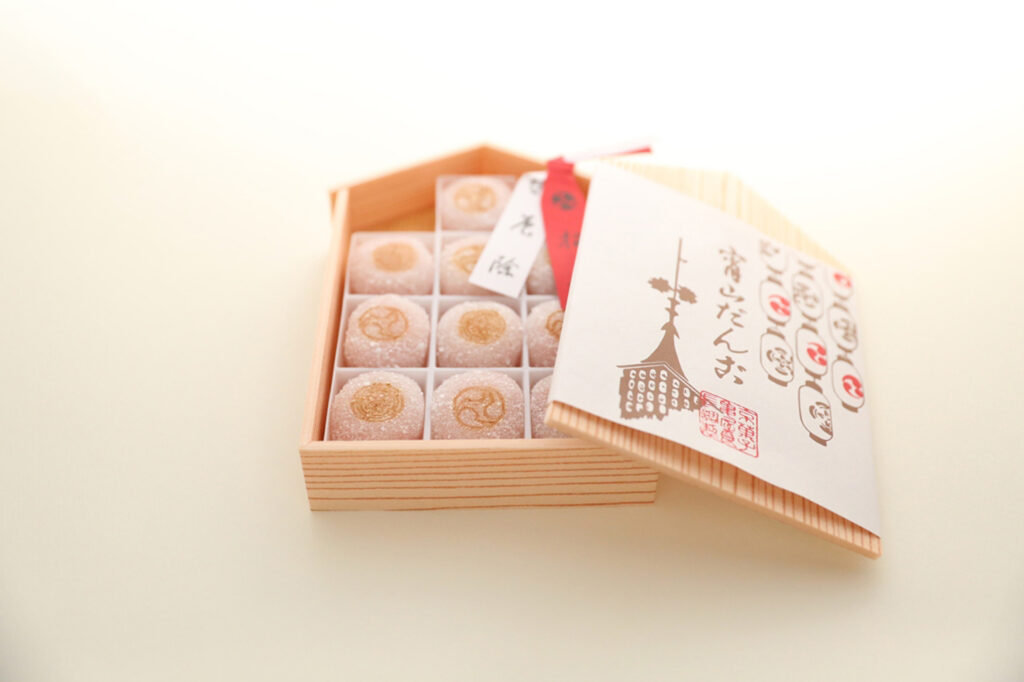
Yoiyama dango: 1,490 yen (July 12 - July 16, ends when all gone)

Kyo-Ame Crochet" has gained a reputation for its candy that combines the skills of Kyoto craftsmen with European beauty techniques. The colorful candies with Japanese designs are beautiful to look at and have many female fans. The "Gion Yamaboko" featured in this issue is a limited edition product that is only available at this time of the year and remains in stores until around the end of July. The bright red and black color of this blackcurrant-flavored candy is eye-catching. It has a long shelf life of one year and is available in large quantities, so it is recommended to enjoy it little by little rather than eating it in a short period of time. If you enjoy it from time to time, you may recall the memories of the Gion Festival each time.
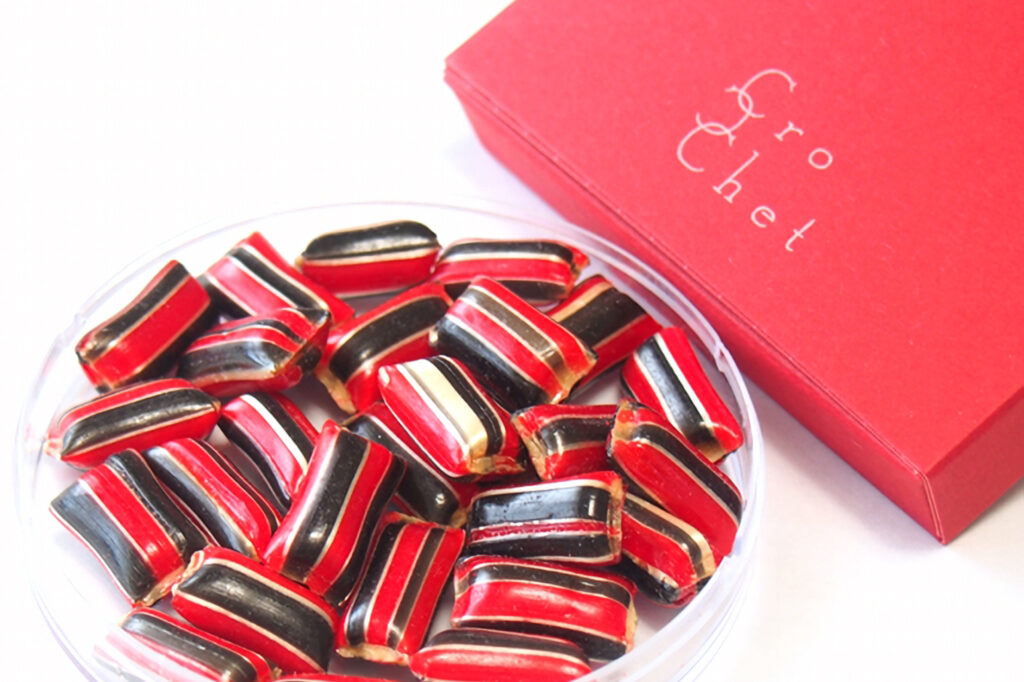
Gion Yamaboko 540 yen (until around late July)

Sanjo-Wakasaya is located at the easternmost end of the Sanjo-kai shopping street. Here you will find their signature product, the "Gion Chigo Mochi. The story goes that the second-generation owner created the mochi in the Taisho period (1912-1926) based on a rice cake that was once served at the Gion Festival to bring good luck and ward off disaster. The design of the package, which is decorated with strips of paper wrapped in the image of bamboo bark, is also reminiscent of the history that has been passed down through the generations. The rice cake is skewered on a bamboo skewer, which keeps your hands clean when eating. It is a famous confectionary of the Gion Festival that evokes a sense of nostalgia.
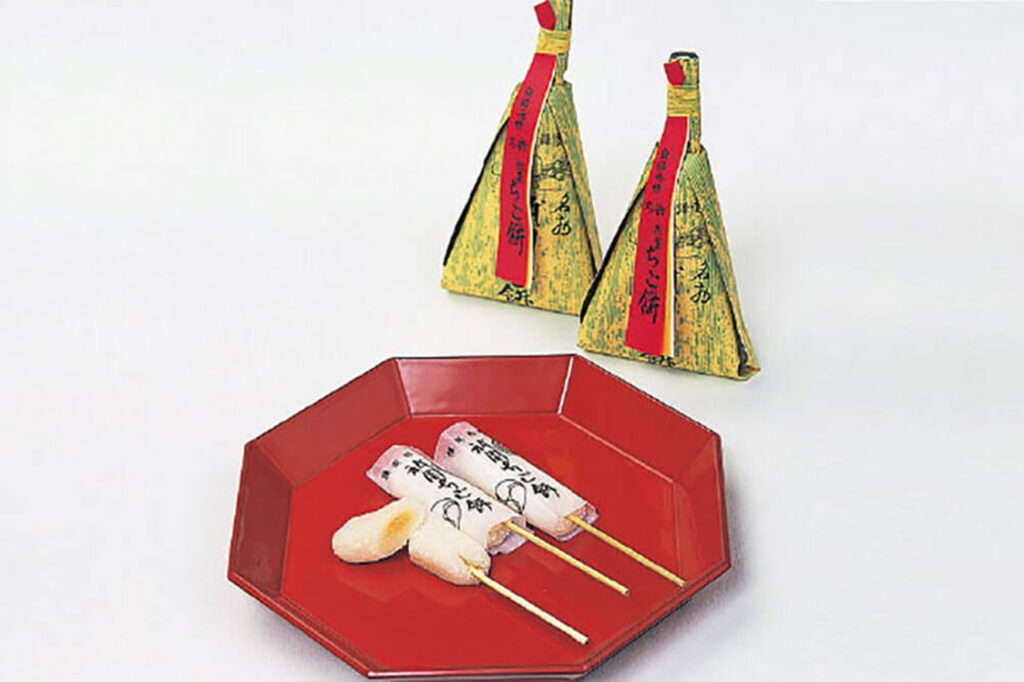
Gion Chigo Mochi 3pcs. 540 yen (all year round)

[Kyo-Agetsu is a long-established confectionery shop founded in the Edo period (1603-1868). They offer sweets that incorporate the four seasons, and "Choto Chimaki" is one of them. When you open the package, which is designed in the image of the Nagatohoko float of the Gion Matsuri (Gion Festival), you will find six freshly baked chimakis with the aroma of bamboo grass. There are three each of the green tea and azuki bean paste flavors, so you can enjoy the different flavors. Chimakis are essential to the Gion Festival to ward off bad luck. It would be a good idea to buy these as "edible chimakis.
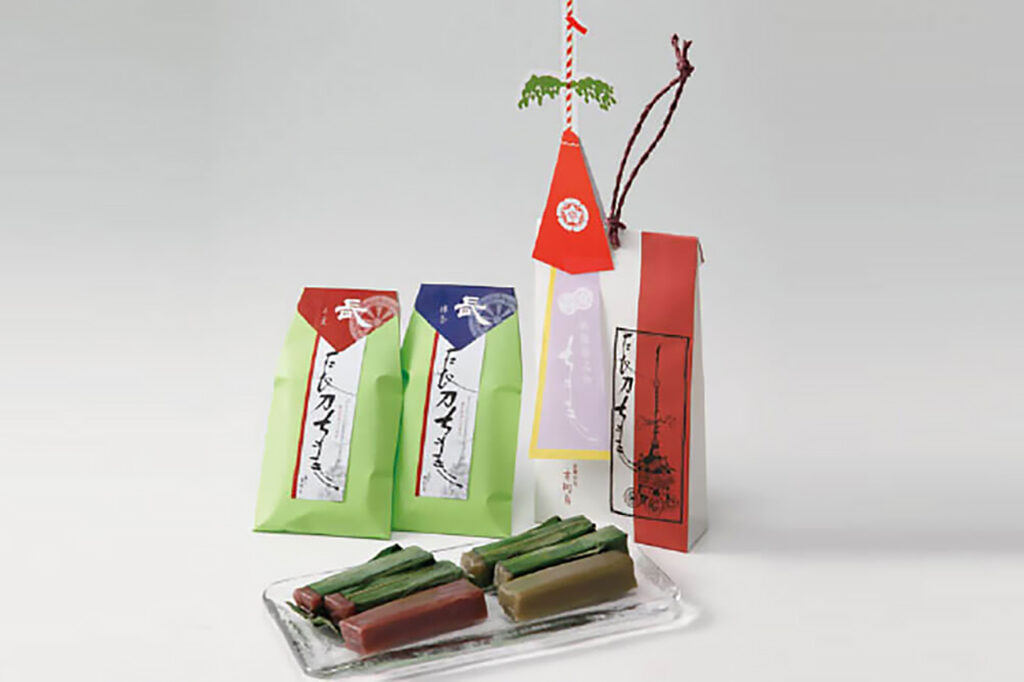
Choto Chimaki: 6 pieces, 972 yen (July 1 - end of July)

Over 600 interviews per year! An order site carefully selected by the editors who knows Kyoto and Shiga.
nowOfficial LINE friend registration500 yen OFF coupon is being issued!
Distributed every Friday morning at 8:00 am! From new restaurant information to event information that we want to share with you, We deliver articles about Kyoto that are useful to know. About 20,000 people have registered.Click here to add a friend!
 News
News Feature article
Feature article Featured event
Featured event